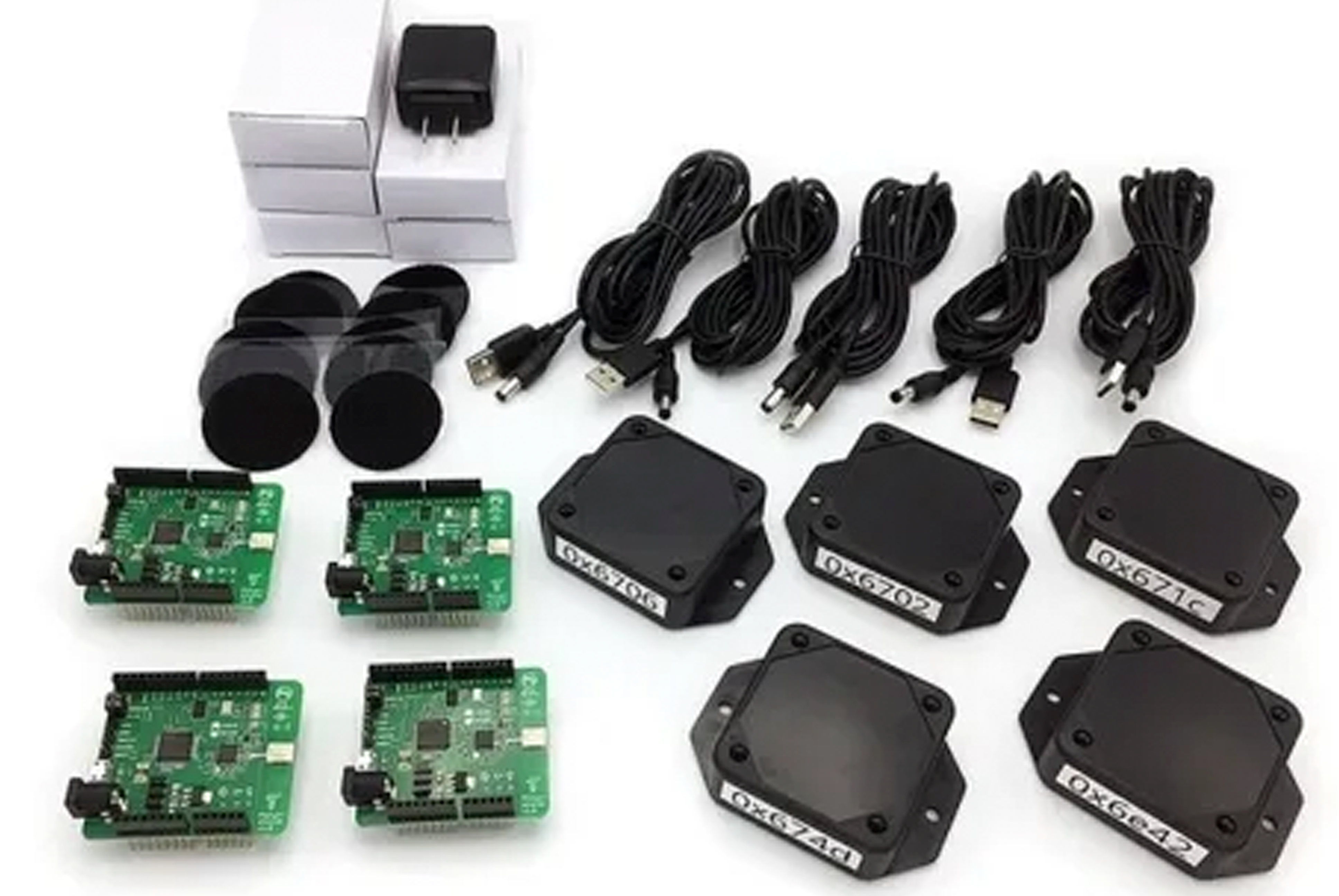Hardware Set-Up

Beacons
Localization
The localization system aims to provide accurate real time estimates of the robot state. In this specific configuration, we depend on sets of static and mobile beacons. The static beacons are placed asymmetrically in the room to cover the operating area of the robots within their convex hull. Asymmetric placement allows for better knowledge of the position of the static beacons, typically known before starting the experiment. The mobile beacons are placed on the robots and collect time-of-arrival(TOA) data to the network of stationary beacons. This provides a noisy distance measurement to stationary beacons with known positions. This distance information is then fused with IMU and odometry data using extended Kalman or particle filters to estimate robot states, such as their position, velocity and heading.
Estimation algorithms
Multiplicative extended Kalman filter
MEKF is a robust alternative for determining accurate orientation from IMU data. This is relevant for our applications as the distance data does not lead to high fidelity orientation estimates. Please see MEKF
.The basic workings of the localization code are as follows:
- The distance and acceleration data is passed to the processing node
- The data is stored in a queue as they arrive
- Robot motion is predicted to the time of arrival of data using dynamical model
- A linearized update of the observation model is used to merge the prediction estimate
- For noisy data, an acceptance probability is used to accept/reject any observations